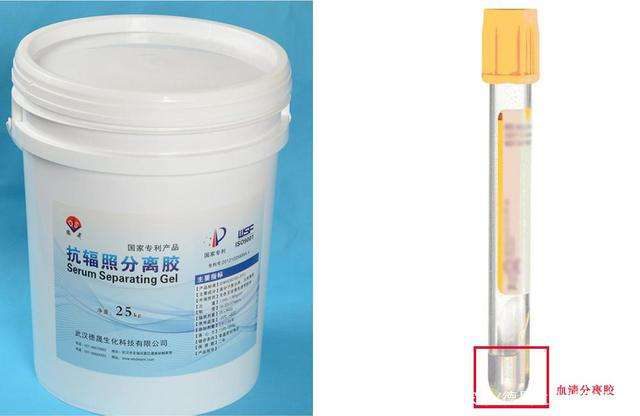Does the serum separation gel affect the test result?
Release time:
2020-10-16
Nowadays, people are increasingly pursuing a healthy life, so health issues have received great attention. The number of physical examinations in the hospital has increased steadily, and the amount of specimens tested has gradually increased, and the requirements for pre-processing of specimens have become higher and higher, that is, the speed should be increased on the basis of ensuring quality. The separation gel blood collection tube appeared.
The separation gel added in the blood collection test tube is an inert, thixotropic viscous liquid with a density of (1.04~1.05), which is between serum density (1.026~1.031) and blood cell density (1.090~1.095). The mechanism of action is due to specific gravity, and the separation gel is just between the serum and blood cells. Therefore, the two can be separated under the action of centrifugal force, and the serum without impurities can be quickly separated, thereby ensuring the stability of the serum chemical composition. The wall of the separating rubber tube is coated with a coagulant, which can promote the rapid coagulation of blood and the rapid precipitation of serum.
Desheng serum separation gel
In view of the above advantages, the separation gel blood collection tube is widely used in various experimental projects. However, some substances are added to the separation gel blood collection tube during the manufacturing process, and the separation gel in the test tube has the potential to absorb the analyte or release interfering substances that may affect the analysis of chemical substances, directly affecting the test results. Therefore, blood collection tubes may become the main source of errors before laboratory analysis.
According to related papers, there are some biochemical or immunological items that are affected by the separation gel. For example, compared with the results of the separation of fresh blood serum, the results of 24 hours separation gel serum are uric acid (UA), creatinine (CRE), and carbon dioxide binding capacity (CO2CP). ) The comparison of these three items is statistically significant (P<0.05); some reports show that the amount of specimens, storage time, temperature and the type of gel may affect the absorption of drugs by the gel. Hydrophobic drugs such as phenytoin sodium and phenobarbital Bitol, carbamazepine, quinidine, and lidocaine may be adsorbed by the hydrophobic separation gel. This adsorption can reduce the drug concentration in serum by 20% to 50%; the concentration of progesterone can be reduced by 50% after 6 days of storage. In addition, the separation gel can also release substances into the blood, which may interfere with the detection of the analyte.
However, separation gel blood collection tubes produced by different manufacturers may have different impacts on the project. For example, after paired t test and Bland Altman analysis, there are statistical differences in progesterone, estradiol, and free thyroxine between test tube A and control tube (P<0.05), and the difference between progesterone and free thyroxine has no clinical Meaning, the difference in estradiol exceeds the acceptable range. There is a statistical difference in the free thyroxine items between the test tube B and the control tube (P<0.05), but the difference is within an acceptable range (the control tube uses a non-additive plastic tube produced by the American BD company).
In addition to the impact of the separation rubber tube on the test results, the evaluation of the quality of the separation rubber tube also includes the influence of the separation gel on the instrument. For example, the fragments of the gel or silicone oil droplets in the separation tube may float in the plasma and serum, and may adhere to the sample probe and cuvette. Or combined with a carrier or other substances in an immunoassay, the oily ball may block and insulate the electrode, thereby changing the function of the electrode and the detection of analyte concentration.
Due to the continuous application of new detection methods and the development of new test items, laboratory staff seldom evaluate the impact of blood collection instruments on test results. The possible impact of blood collection tubes on test results is often overlooked by experimenters, so Laboratory staff should be alert to potential interference caused by the composition of the blood collection tube. When changing the manufacturer and type of blood collection tube, use a glass test tube (because its inertness is recognized as having no effect on the test results) as a control tube to verify whether the blood collection tube can guarantee the accuracy of the test results.
Previous page
Previous page
News
2024/04/15
Contact details
Contact number
Address: C8, Guanggu United Science and Technology City, Ezhou City, Hubei Province
Fax:0711-3704 589
Follow us




